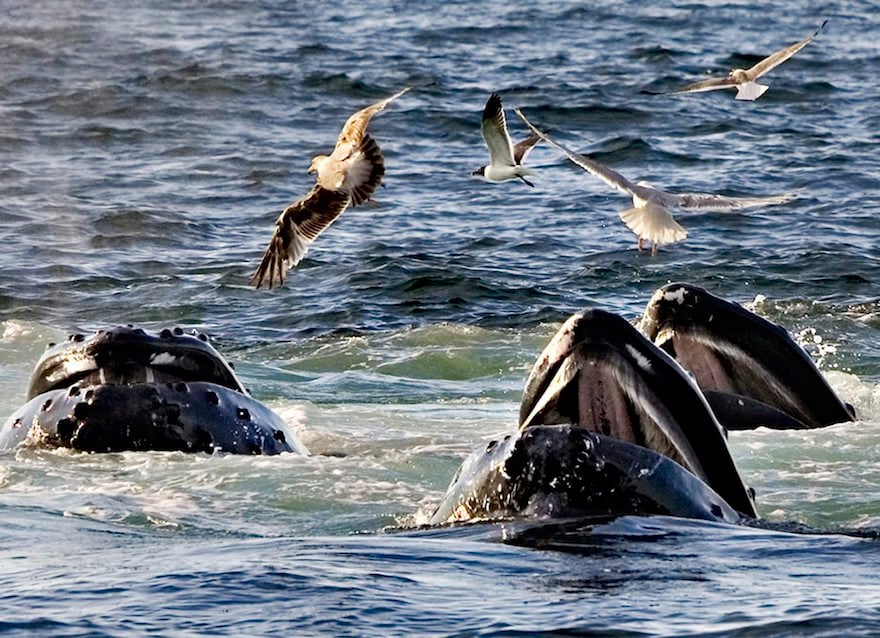Infographic: Charting the world’s sixth mass extinction
We are entering the first mass extinction since the dinosaurs disappeared 65 million years ago
FILE – In a July 11, 2008 file photo, a trio of humpback whales break the surface of the water as they work together in a group behavior known as “bubble feeding” off the coast of Cape Cod near Provincetown, Mass. Efforts to save endangered animals are making a measureable difference, even as a fifth of the world’s backboned species _ mammals, birds, reptiles, amphibians and fishes _ are threatened with extinction, a huge new analysis says. (AP Photo/J. Scott Applewhite, File)
Share

We are at the beginning of the world’s sixth mass extinction; not since the fall of the great prehistoric beasts has our planet seen such extreme species loss. Last week, scientists writing in the journal Science Advances found that vertebrates—animals with a backbone—are going extinct at a rate up to 100 times greater than in the past. These rates are unusually high, even considering Earth’s long history, and humans—for whom a period of such high extinction rates is unprecedented—could feel the consequences in as few as three lifetimes.
Since 1500, fully 338 extinctions have been documented, while 279 species have gone “extinct in the wild” or “possibly extinct,” as classified by the International Union for Conservation of Nature (IUCN). Of those 617 extinctions, a disproportionate number have been lost since 1900: 477 species, or 77 per cent.
The steep increase in vertebrate extinction rates corresponds with the rise of industrial society. The losses experienced in the last 200 years would normally have been seen over a period of up to 10,000 years, note the scientists. And what’s to blame? The study attributes the change to human factors.

And, as bad as this all sounds, the reality is likely even worse. The authors write: “We emphasize that our calculations very likely underestimate the severity of the extinction crisis, because our aim was to place a realistic ‘lower bound’ on humanity’s impact on biodiversity.”
They note that it’s still possible to prevent future dramatic losses, but immediate and aggressive conservation is required. The IUCN says at least 50 animals move closer to disappearing each year. Currently, around 41 per cent of all amphibians and 25 per cent of all mammals are threatened with extinction.
